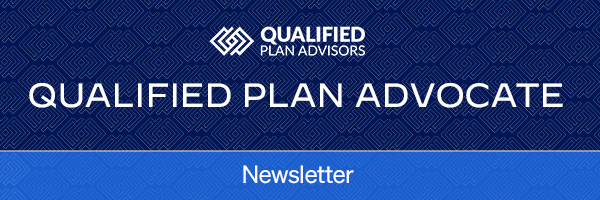Regulatory & Litigation Update: 4Q 2024
The retirement plan landscape continues to evolve, with litigation retaining its steam, many SECURE 2.0 Act of 2022 provisions already effective and more coming around the corner in January, and the Internal Revenue Service (IRS) and Department of Labor (DOL) attempting to provide the guidance plan sponsors and fiduciaries need. This quarter’s Regulatory and Litigation Update addresses some of the key guidance items issued by the IRS and DOL, as well as a couple of encouraging and instructive litigation developments.
Cybersecurity: In 2021, the DOL released a three-part cybersecurity guidance package. The three parts included “Tips for Hiring a Service Provider,” “Cybersecurity Program Best Practices,” and “Online Security Tips.” The DOL made it clear that it views cybersecurity as a fiduciary issue, recognizing “the importance that plan sponsors and fiduciaries must place on combatting cyber crime.” In September of 2024, the DOL updated that guidance package through Compliance Assistance Release 2024-01 to confirm that the guidance applies to all ERISA-covered plans, including not only retirement plans, but also health and welfare plans.
Prime Capital Retirement Commentary: The DOL Release is important for plan sponsors for two reasons:
- It reiterates the DOL’s stance regarding the fiduciary imperative to ensure recordkeepers and TPAs have implemented acceptable cybersecurity safeguards. Prime Capital Retirement clients’ meeting book from the first quarter of 2024 included the recordkeeper’s responses to a Cybersecurity RFI conducted on behalf of each client.
- For those readers who have fiduciary and/or administrative responsibilities relating to your organization’s ERISA-covered health and welfare plans, it will be important to conduct similar inquiries of the service providers to those plans.
“Super Catch-up”: Last quarter we provided a framework for: (i) identifying the SECURE 2.0 Act provisions that would become effective and/or available in 2025; (ii) understanding which features will be supported by your recordkeeper/TPA; and (iii) making and memorializing decisions around those your organization prefers to implement. One of the more prominent upcoming features will be the “super catch-up” provision, which will allow participants age 60, 61, 62, or 63 (as of the end of the year) to make higher catch-up contributions than the amount otherwise permitted.
Prime Capital Retirement Commentary: Many recordkeepers treated this as an “opt out” feature, which would result in the option becoming effective in the absence of an election to the contrary. In any event, the key questions now are: (1) will this become effective for your plan in January? and (2) if so, are you ready? The implementation likely requires a combination of communication and programming with your payroll provider/department and communication with participants.
SECURE 2.0 Student Loan Debt Payment Matching Contributions: The SECURE 2.0 Act included an additional optional provision that received a lot of early attention, but has not seen widespread adoption and implementation: the ability to make plan matching contributions based on student loan payments (made outside of the plan, to the lender). Many recordkeepers were slow to champion this option because the statute left many unanswered questions, and the IRS had not provided much interpretative guidance. In late August, the IRS came through with Notice 2024-63.
Prime Capital Retirement Commentary: It’s probably not reasonable to expect recordkeepers to have already digested the Notice and made all of the necessary systems changes. However, the Notice is very detailed and quite helpful. As a result, we believe it is reasonable to restart conversations about whether this plan feature might be valuable to your current or prospective employees.
Process Matters: This is a recurring theme, and we expect that to remain the case for the foreseeable future. At this year’s Qualified Plan Fiduciary Summit, we talked about the fiduciary roadmap laid out in the Nunez v. B. Braun case. Last quarter, we highlighted a Federal court’s description of a fiduciary process as “diligent,” “deliberative and rigorous,” and “prudent” in Silva v. Evonik. The courts decided both of those cases in the fiduciaries’ favor. In late September, another federal court followed suit, ruling in favor of the fiduciaries following a bench trial in In re Quest Diagnostics Incorporated ERISA Litigation.
The plaintiffs (participants) had challenged the plan committee’s inclusion of two core investment options and a particular suite of target date funds within the plan’s investment lineup. The court (citing the Silva and Nunez cases referenced above) disagreed with those challenges and found the fiduciaries’ process to be “diligent.”
Prime Capital Retirement Commentary: The court listed a number of action steps that constituted “sufficient evidence” that the committee had engaged in conduct comparable to those other fiduciary-favorable cases, many of which should be quite familiar:
- Engaged a fiduciary investment advisor;
- Met on a quarterly basis to review the plan’s funds;
- Received from the advisor quarterly materials reflecting an overview of external market activity, economic indicators, regulatory and legislative updates, and a Watch List;
- Maintained sufficient meeting minutes;
- Received annual fiduciary trainings.
Forfeiture Litigation Continues: Plan forfeitures remain a key topic for discussion . . . and potential action. As a brief recap, plaintiffs firms have begun to file lawsuits alleging that plan fiduciaries have breached their fiduciary responsibilities by inappropriately using plan forfeitures. The Internal Revenue Service and DOL have long supported the use of forfeitures for any of three reasons: (1) to offset administrative expenses; (2) to offset employer contributions; or (3) to increase benefits. However, the crux of the recent litigation – now spanning at least 20 lawsuits across the country – is that plan fiduciaries put the company’s interests ahead of the participants’ interests when using forfeitures to offset employer contribution obligations.
Prime Capital Retirement Commentary: One federal court granted the fiduciaries’ motion to dismiss one of those cases in September (Naylor v. BAE Systems, Inc.). That’s a good sign for fiduciaries, but it remains important to recognize that the plan language will largely control the outcome of these cases – and plan language varies greatly across plan documents. With that in mind, we recommend that each plan sponsor consider the following questions:
- Is the current use of forfeitures one permitted by the plan document?
- If forfeitures are being used to offset employer contributions, does this involve a choice (between other options)? If so, might it be appropriate to consider a change in practice or the plan language?
The law isn’t completely settled in this context, but the requirement to operate a plan consistent with its terms is indeed clear. As a result, that’s the appropriate starting point.
– Matthew Eickman, J.D.




